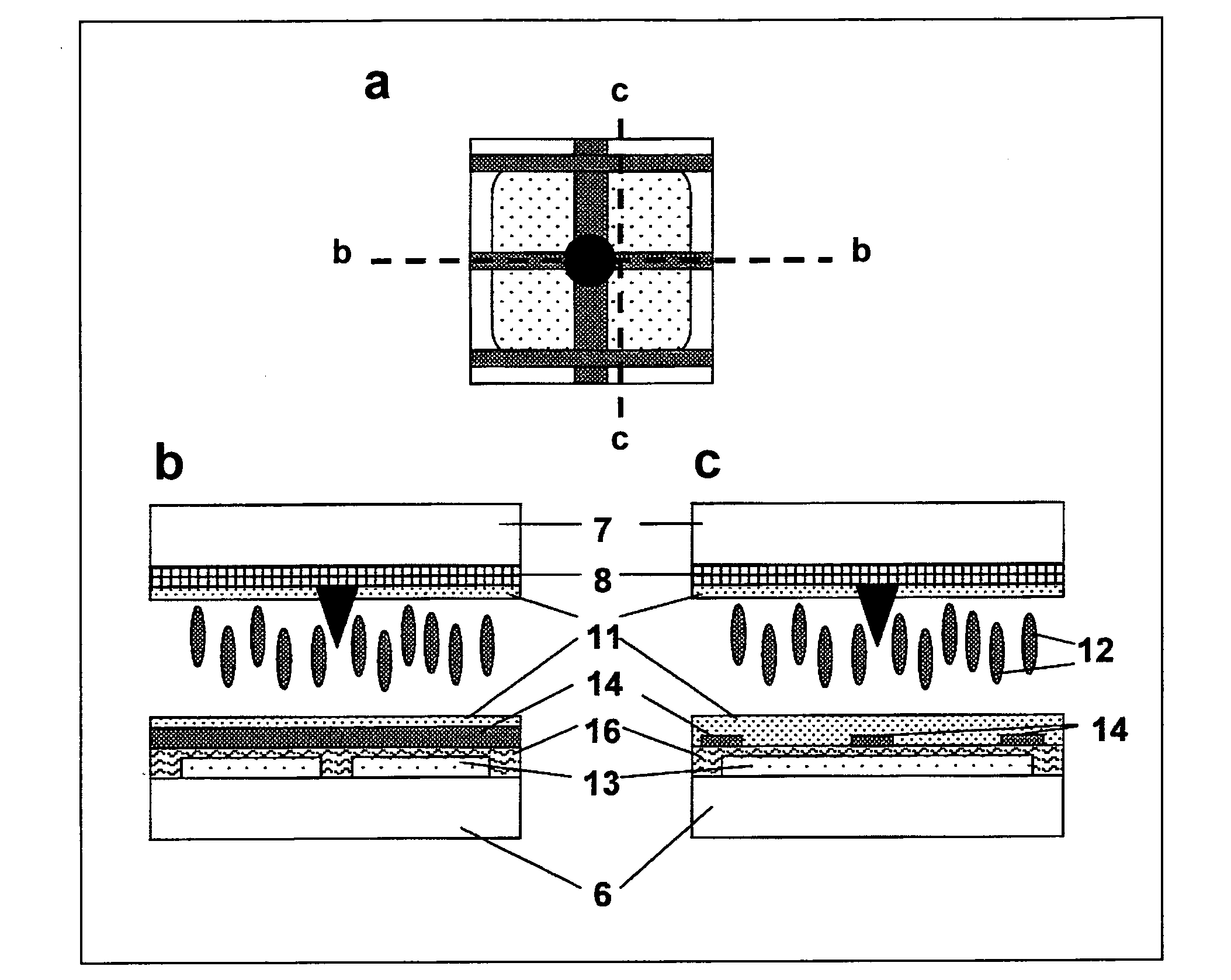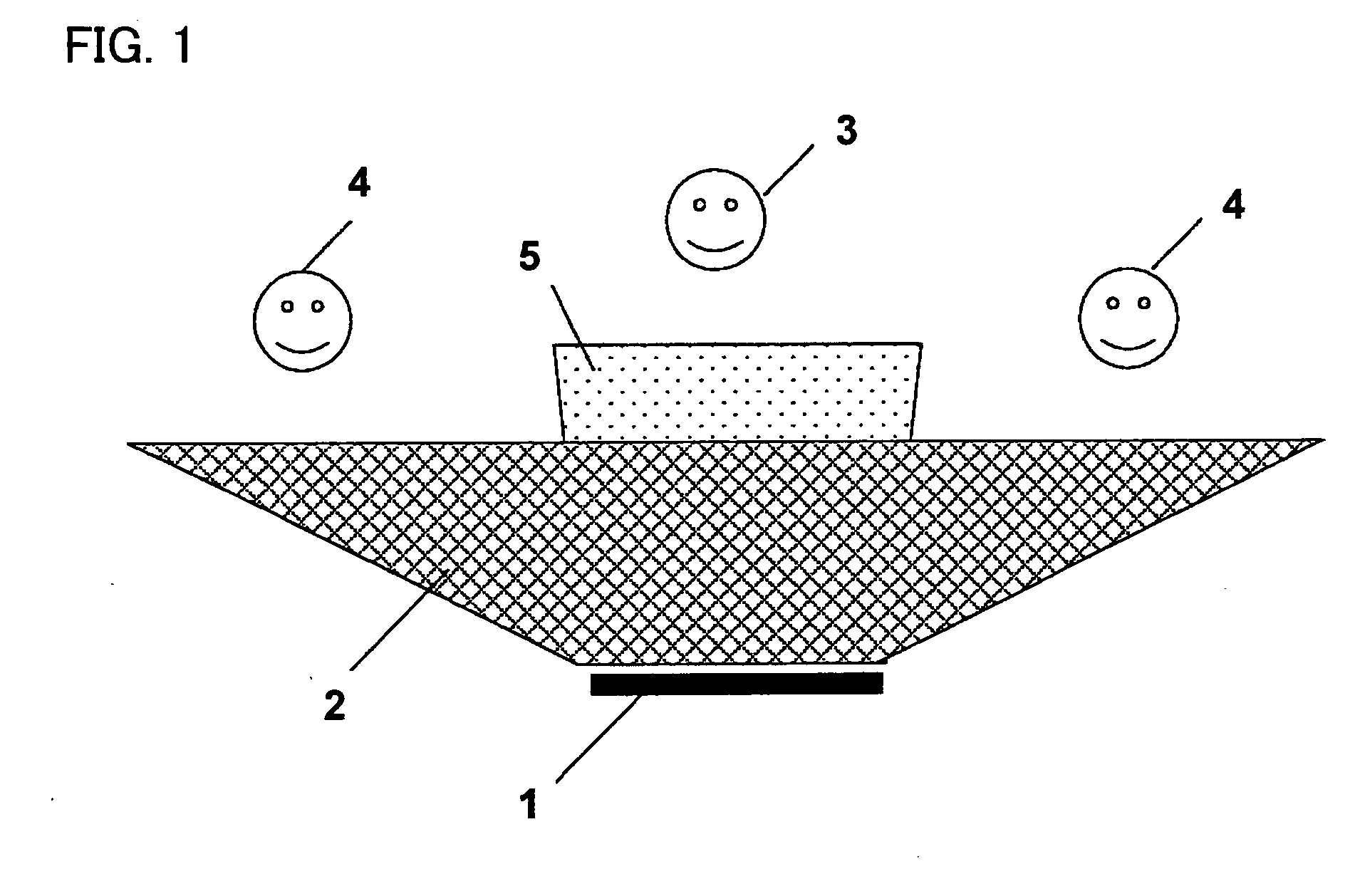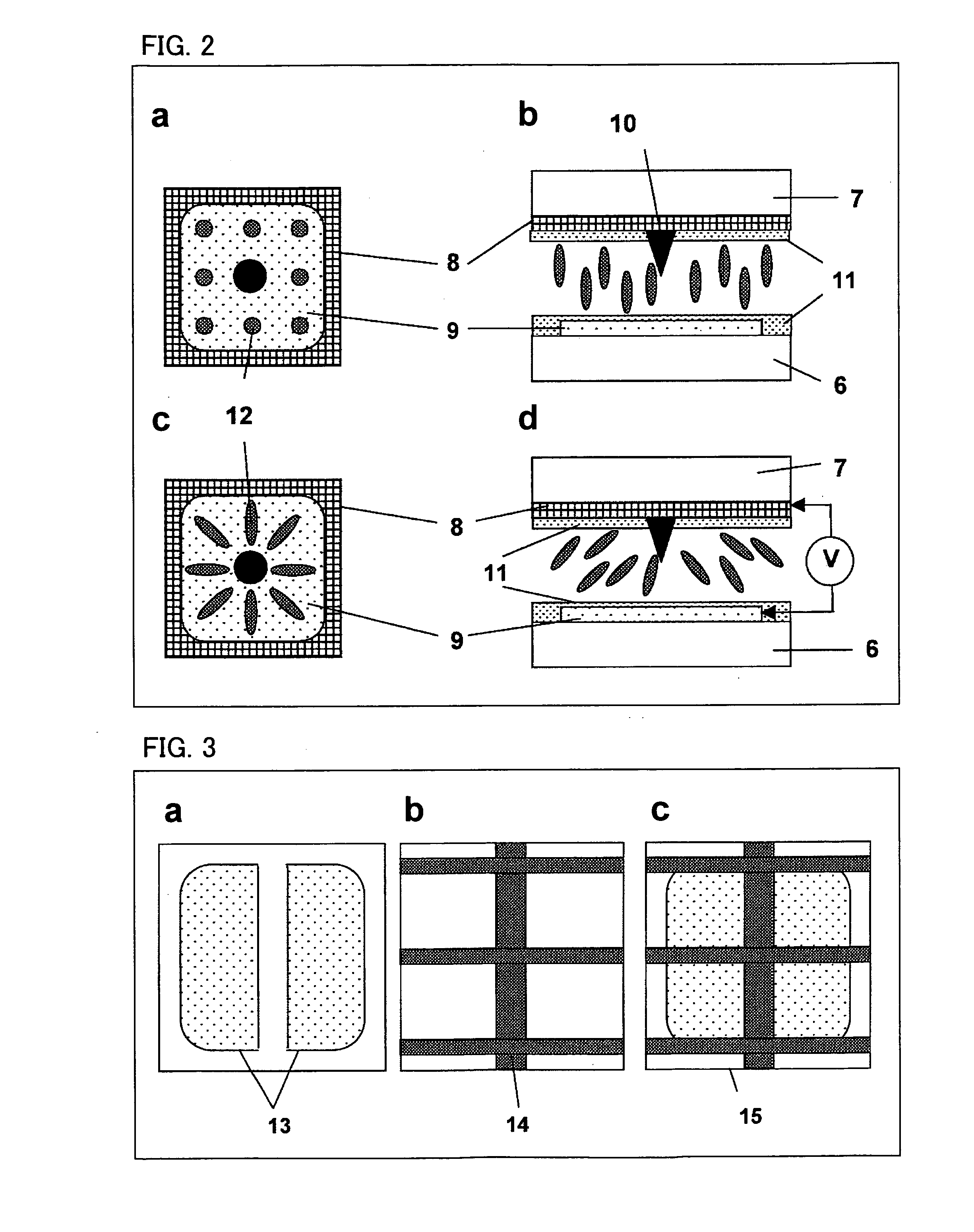Liquid crystal device
a liquid crystal and film technology, applied in static indicating devices, non-linear optics, instruments, etc., can solve the problems of requiring mechanical manipulation, i.e. removal of film, and the film always absorbs a significant fraction of light incident upon, and achieves symmetric viewing angle, good public mode, and wide viewing angle properties.
- Summary
- Abstract
- Description
- Claims
- Application Information
AI Technical Summary
Benefits of technology
Problems solved by technology
Method used
Image
Examples
Embodiment Construction
[0081]In a preferred embodiment of the invention, the LCD is a vertically aligned nematic (VAN) type LCD operating in an advanced super view mode (ASV) whereby the sub-pixel display elements are comprised of one or more continuous pinwheel alignment (CPA) domains, which are typically 30-100 μm square.
[0082]FIGS. 2a to 2d are schematic diagrams of a liquid crystal cell or pixel region forming part of a liquid crystal device comprising an array of such cells or regions. FIGS. 2a to 2d show a standard CPA domain viewed from above the LC cell (FIG. 2a) and as a slice through the cell (FIG. 2b) at zero applied voltage, and with a voltage applied between electrodes disposed on the inner surfaces of the opposing glass substrates (FIGS. 2c and 2d). The ASV type display comprises a lower active matrix glass substrate 6 and a counter substrate 7 opposed to each other with a predetermined separation. The counter substrate is coated with a transparent electrode material such as Indium Tin Oxide...
PUM
 Login to View More
Login to View More Abstract
Description
Claims
Application Information
 Login to View More
Login to View More - R&D
- Intellectual Property
- Life Sciences
- Materials
- Tech Scout
- Unparalleled Data Quality
- Higher Quality Content
- 60% Fewer Hallucinations
Browse by: Latest US Patents, China's latest patents, Technical Efficacy Thesaurus, Application Domain, Technology Topic, Popular Technical Reports.
© 2025 PatSnap. All rights reserved.Legal|Privacy policy|Modern Slavery Act Transparency Statement|Sitemap|About US| Contact US: help@patsnap.com



